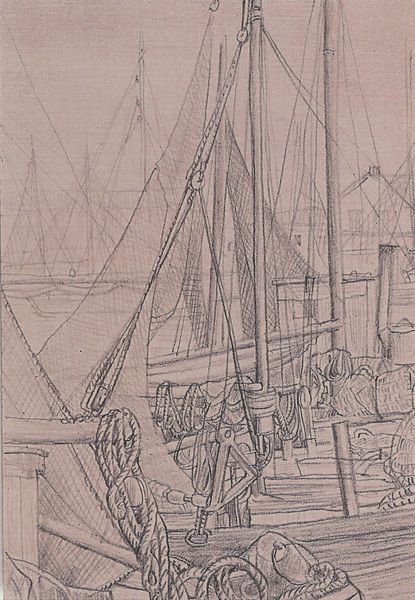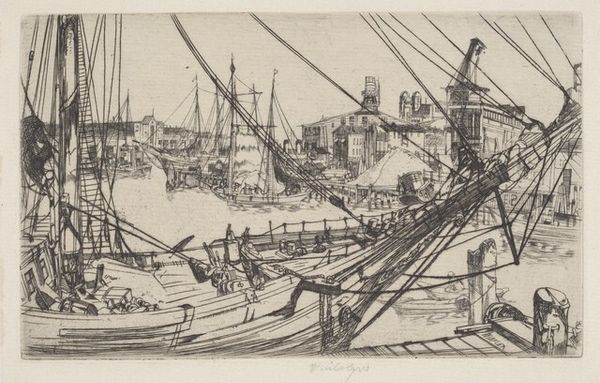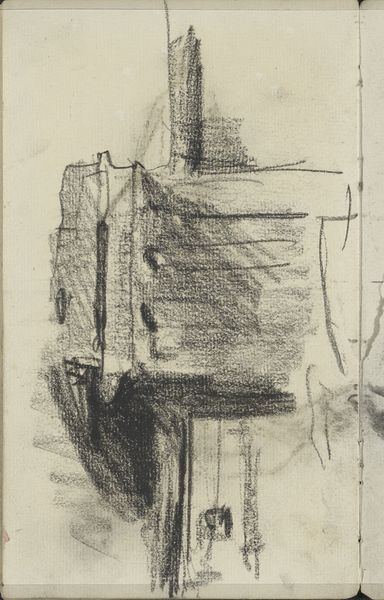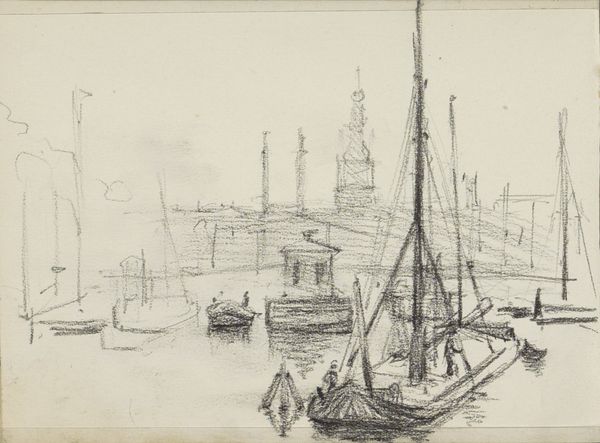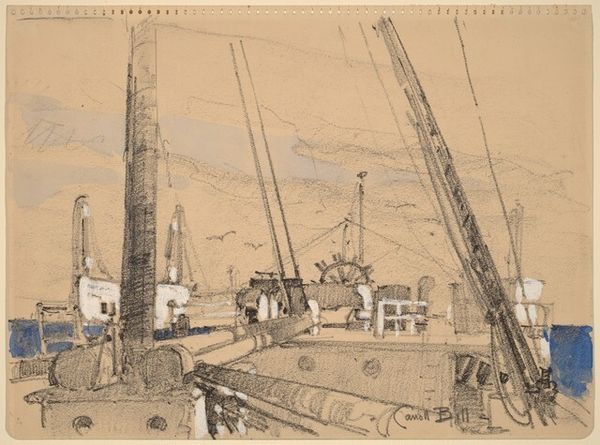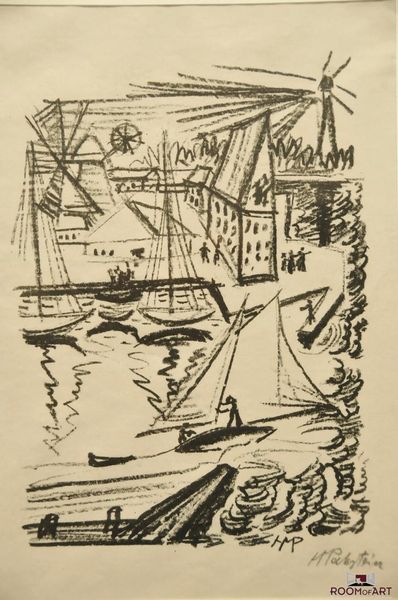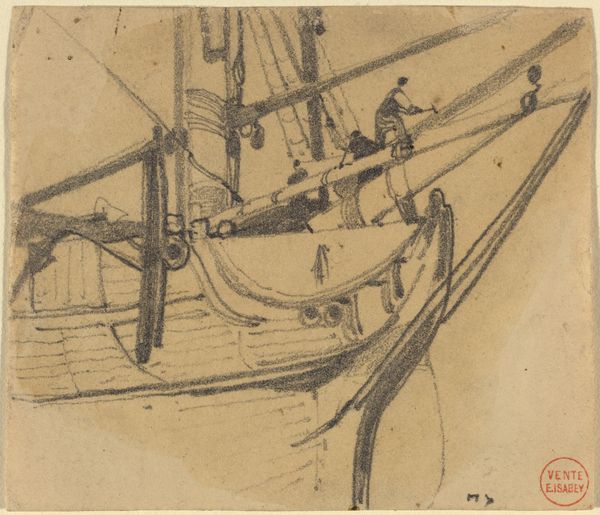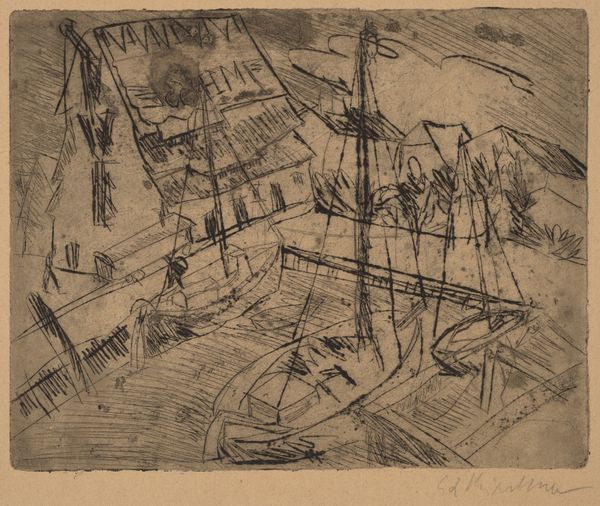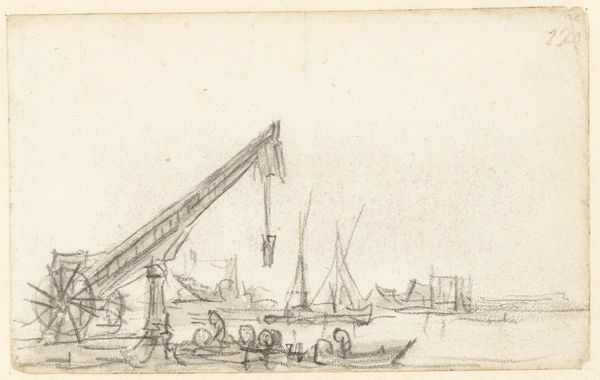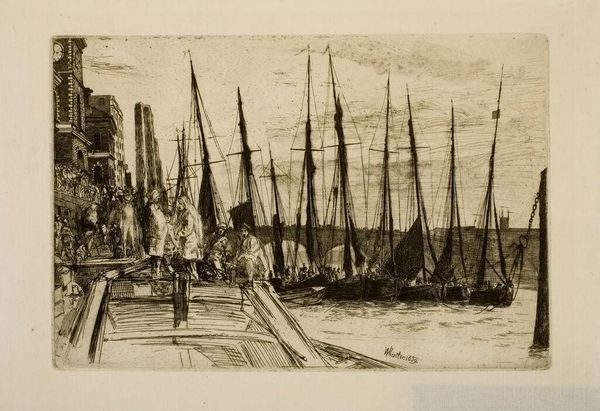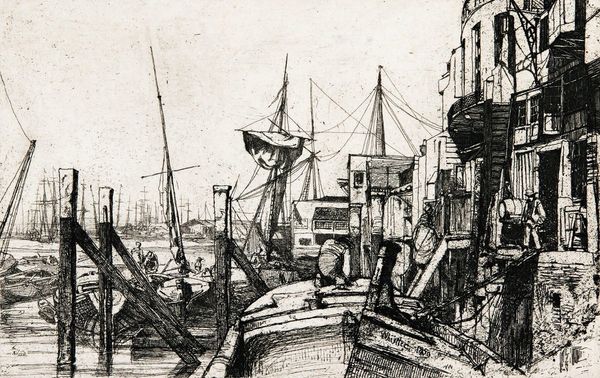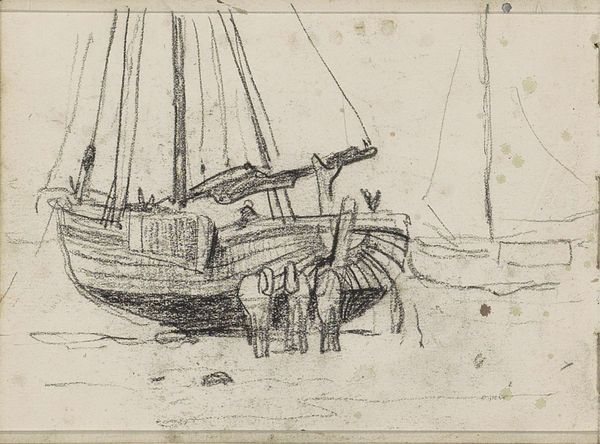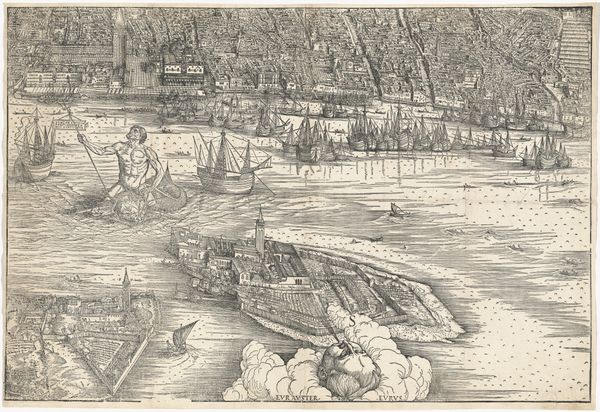
drawing, pencil, graphite
#
drawing
#
landscape
#
pencil
#
graphite
#
cityscape
#
realism
Copyright: Hans Bellmer,Fair Use
Curator: Hans Bellmer created "Sketches after Nature" in 1932 using graphite and pencil. It seems to depict a harbor scene. Editor: It does feel quite urban and a bit melancholic. The gray hues, the density of the boats and architecture... there's a real feeling of confinement in that harbor, almost industrial. Curator: Bellmer’s interest in urban space is apparent. There's a fascination with industry here, but what social message do you read in this view of maritime labor? Are these the tools or products of toiling workers, evidence of trade? Editor: It is hard to know exactly but one thing is obvious here: there is no labor present. In reality, there are so many figures we miss. Instead we are invited to consider the scene for all its shapes, shadows and density, almost oppressive due to lack of dynamism or direct focus. Curator: Considering his later works, with their provocative themes, I wonder if there's an element of veiled critique. Perhaps the sketches represent Bellmer observing social structure. Editor: True, and there's an immediacy to the material, isn’t it? He opted for basic materials like pencil and graphite. There is something intrinsically more honest or direct to using these as opposed to say painting with oils. Bellmer makes clear what went into creating this piece and does not obscure the means of production with costly or unattainable medium. Curator: It's a medium that renders social commentary accessible; that allows his work to interact directly with the common viewer. I can't help thinking this cityscape anticipates the visual austerity and muted tones he'd bring to his surrealist pieces later on. Editor: Indeed, it reveals an intimate aspect. Thinking about the work within an audio guide context makes it even more powerful to consider that people would see the piece through our lens rather than through his, thus creating a never ending circle of reception, production and engagement.
Comments
No comments
Be the first to comment and join the conversation on the ultimate creative platform.
